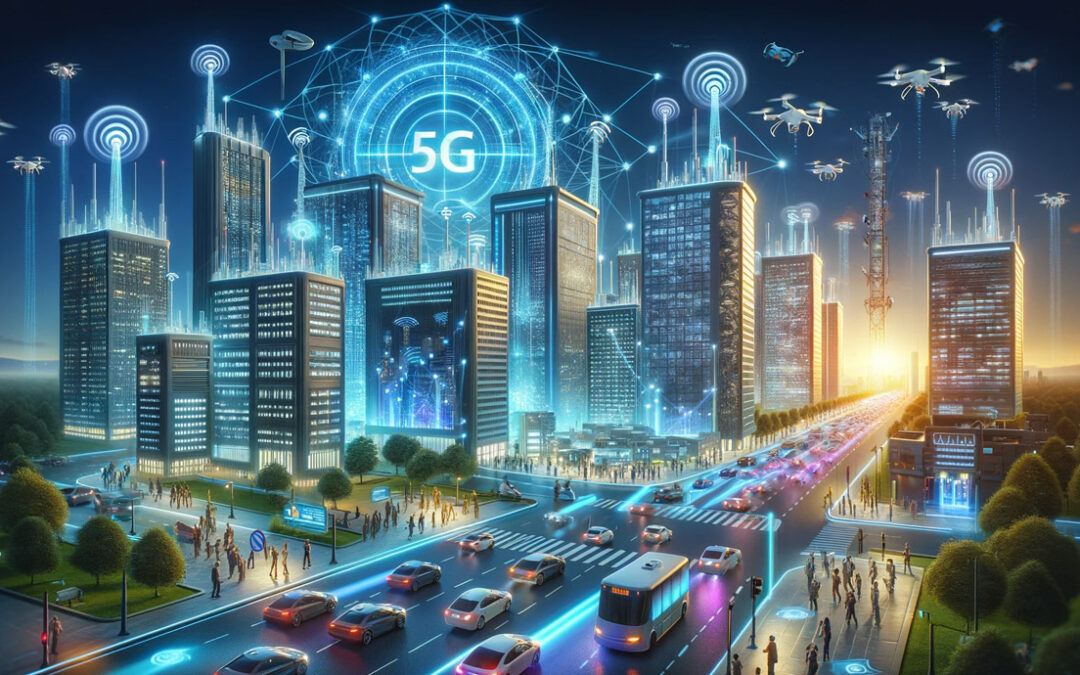Introduction
The evolution of technology has always been characterized by leaps that redefine the way we live, work, and communicate. In today’s digital age, the advent of 5G technology stands as a monumental milestone poised to revolutionize connectivity on a global scale. In this comprehensive exploration, we delve into the potential of 5G, uncovering its transformative impact across industries and its implications for the future of communication and innovation.
Understanding 5G Technology
5G, the fifth generation of wireless technology, represents a monumental leap forward in connectivity compared to its predecessors. Unlike previous generations, 5G is not merely an incremental improvement; it’s a paradigm shift that promises exponentially faster speeds, lower latency, and increased capacity to connect more devices simultaneously.
Key Features and Advantages of 5G
Unprecedented Speeds: 5G networks have the potential to deliver speeds up to 100 times faster than 4G, enabling near-instantaneous downloads, seamless streaming of high-definition content, and ultra-responsive experiences for users.
Low Latency: Reduced latency, or the time it takes for data to travel from the device to the network and back, is a hallmark of 5G. This near real-time responsiveness is critical for applications like remote surgery, autonomous vehicles, and immersive virtual reality experiences.
Massive Device Connectivity: 5G networks have the capacity to connect significantly more devices simultaneously, paving the way for the Internet of Things (IoT) to flourish. This capability is instrumental in smart city initiatives, where interconnected devices optimize infrastructure and services.
Impact Across Industries
Telecommunications: Telecom companies are at the forefront of 5G deployment, ushering in faster networks and improved connectivity for consumers and businesses alike. Enhanced mobile broadband experiences will redefine how we interact with our devices.
Healthcare: The healthcare sector stands to benefit immensely from 5G’s low latency and high bandwidth. Remote patient monitoring, telemedicine, and even surgeries performed by specialists across the globe become feasible with reliable and high-speed connectivity.
Manufacturing and Industry 4.0: In manufacturing, 5G enables the implementation of advanced robotics, IoT-enabled sensors, and real-time monitoring, enhancing efficiency, productivity, and safety on factory floors.
Autonomous Vehicles and Smart Transportation: The low latency of 5G is crucial for the safety and effectiveness of autonomous vehicles. It facilitates real-time communication between vehicles, infrastructure, and pedestrians, paving the way for safer and more efficient transportation systems.
Challenges and Considerations
Despite its potential, the widespread implementation of 5G technology faces challenges such as infrastructure development, spectrum allocation, and security concerns. Additionally, bridging the digital divide to ensure equitable access to this advanced technology remains a global concern.
Conclusion
As we embark on this era of unparalleled connectivity, the potential of 5G technology to reshape industries, enhance communication, and drive innovation is undeniable. From empowering smart cities to revolutionizing healthcare and revolutionizing how we live and interact, 5G stands as a catalyst for the next wave of technological advancements. However, its full potential can only be realized through collaborative efforts, addressing challenges, and ensuring inclusive access. Embracing the transformative power of 5G, we step into a future where connectivity transcends boundaries, opening doors to limitless possibilities and shaping a more connected and technologically empowered world.


